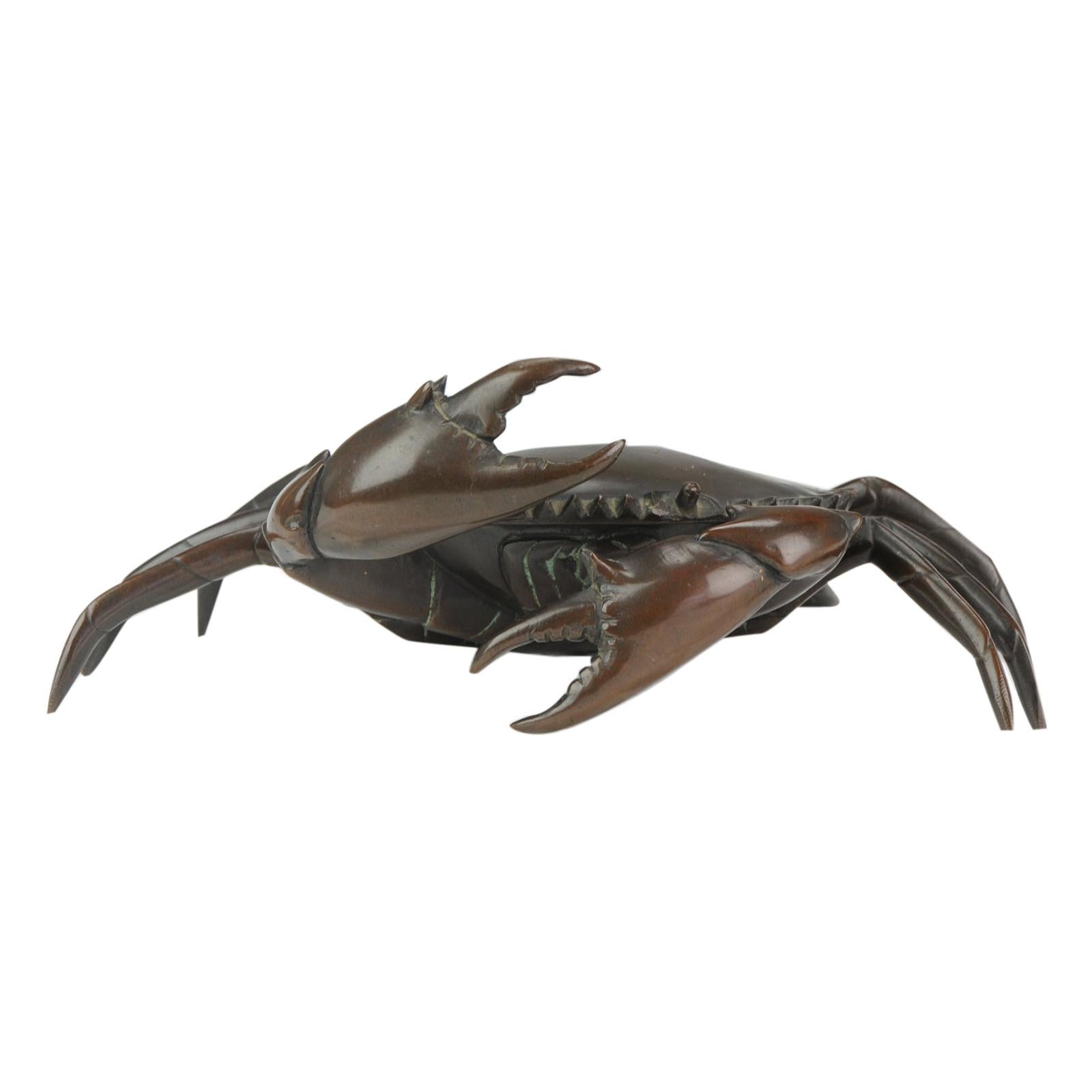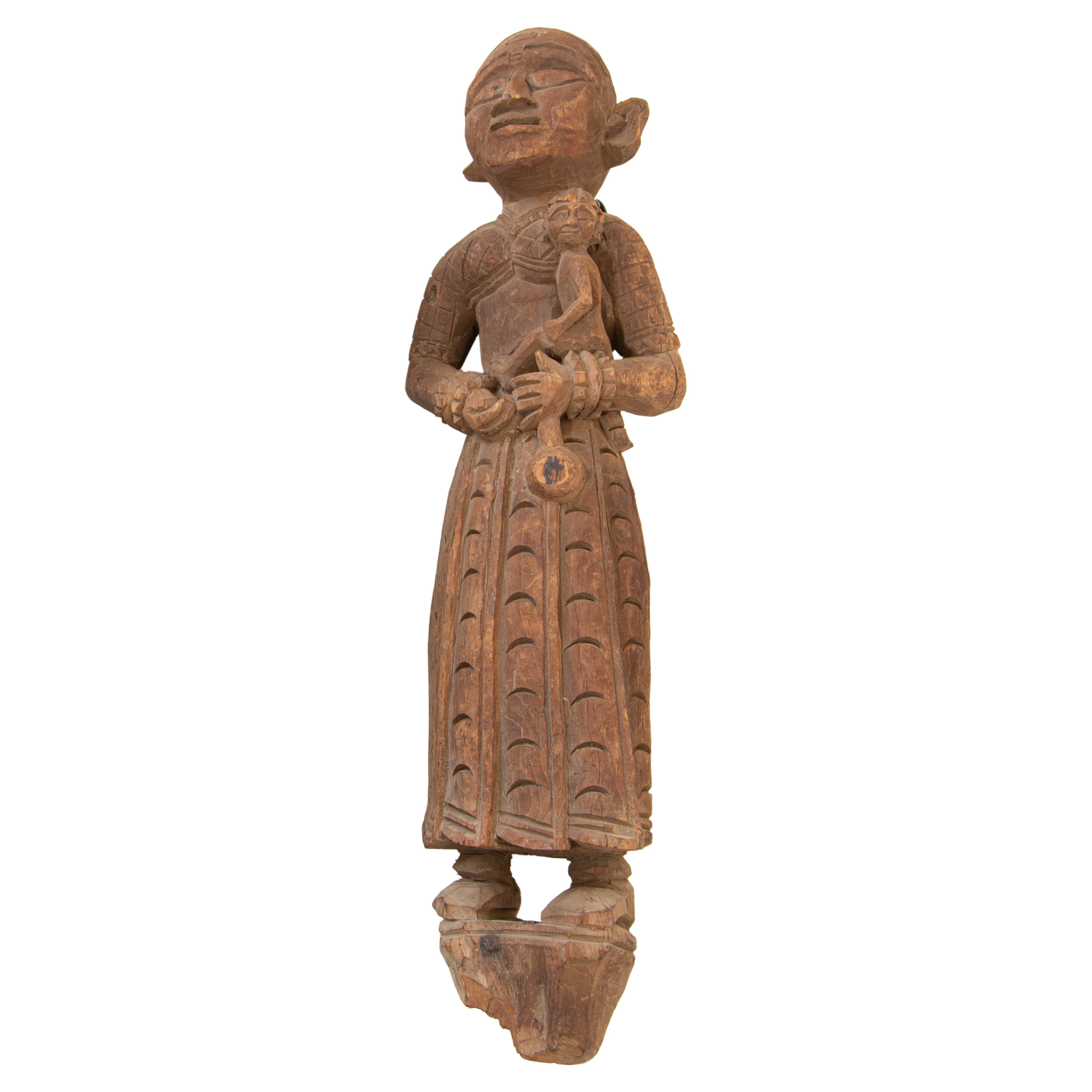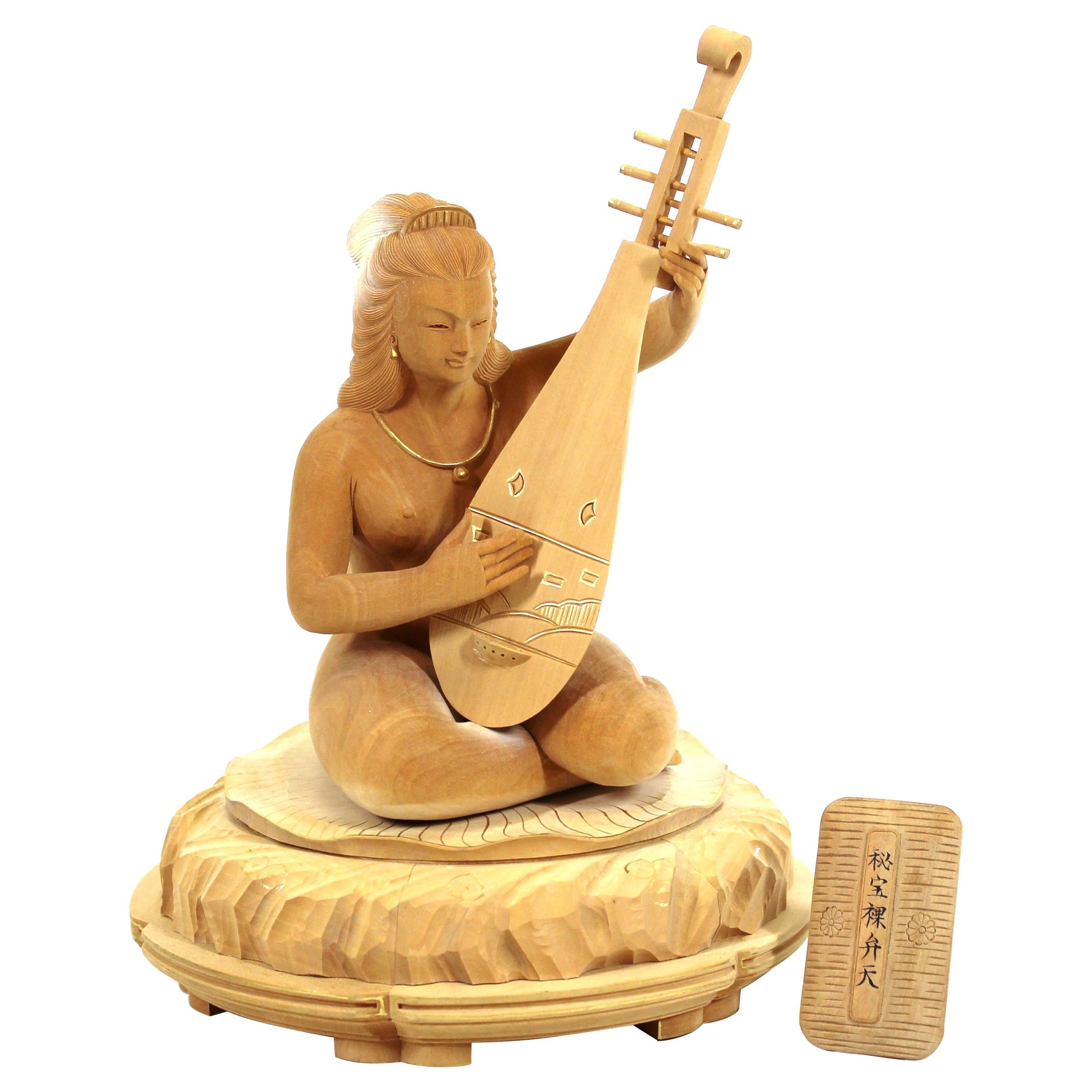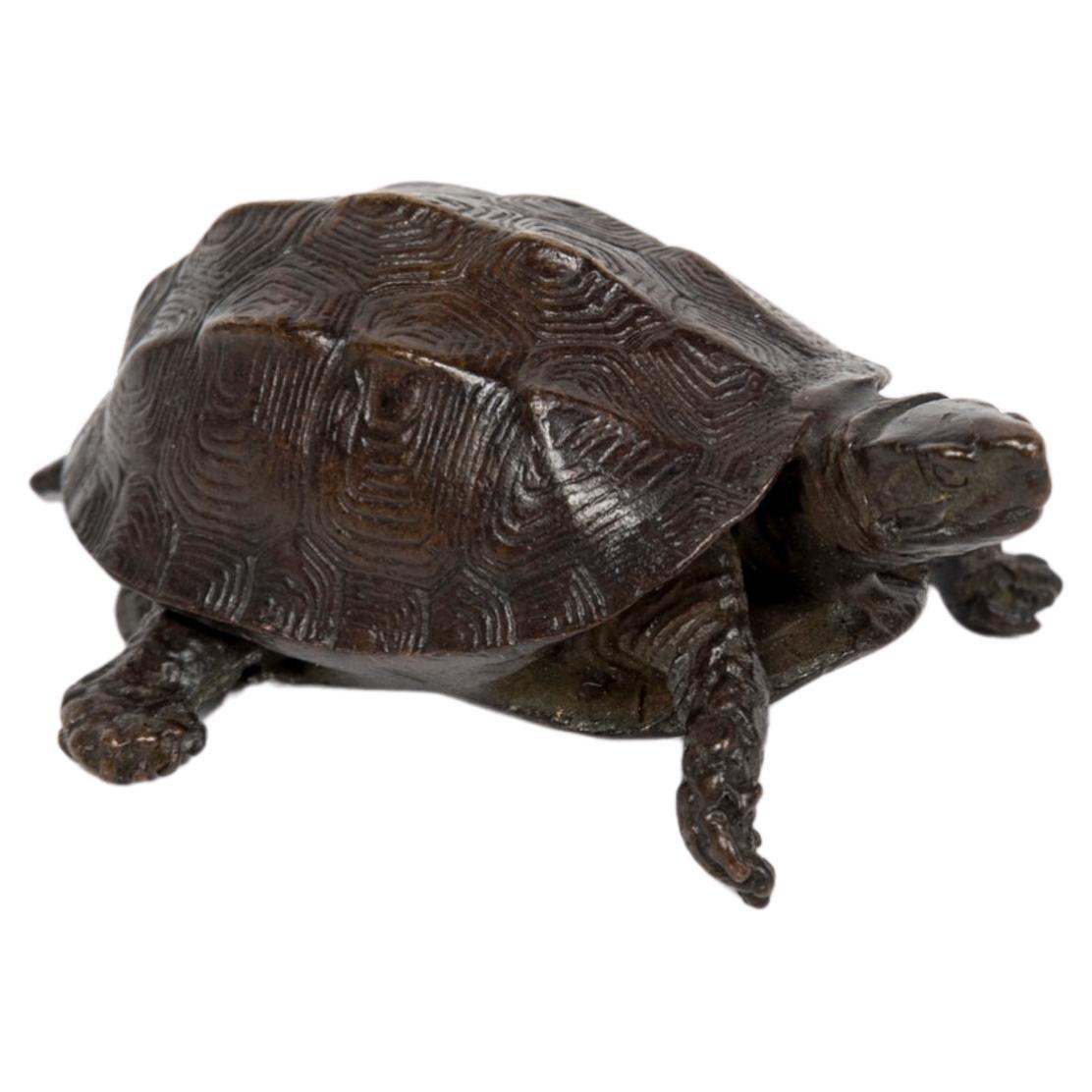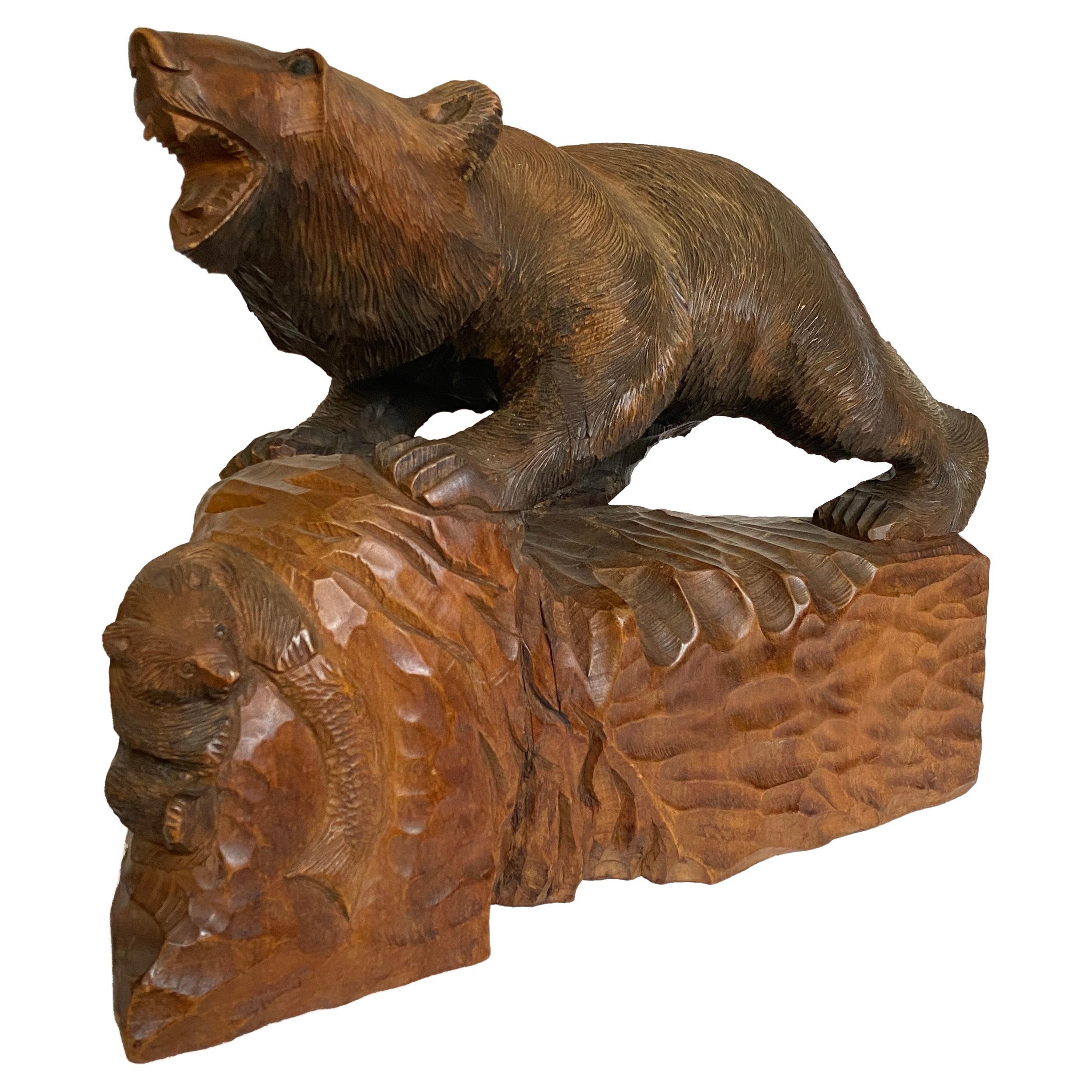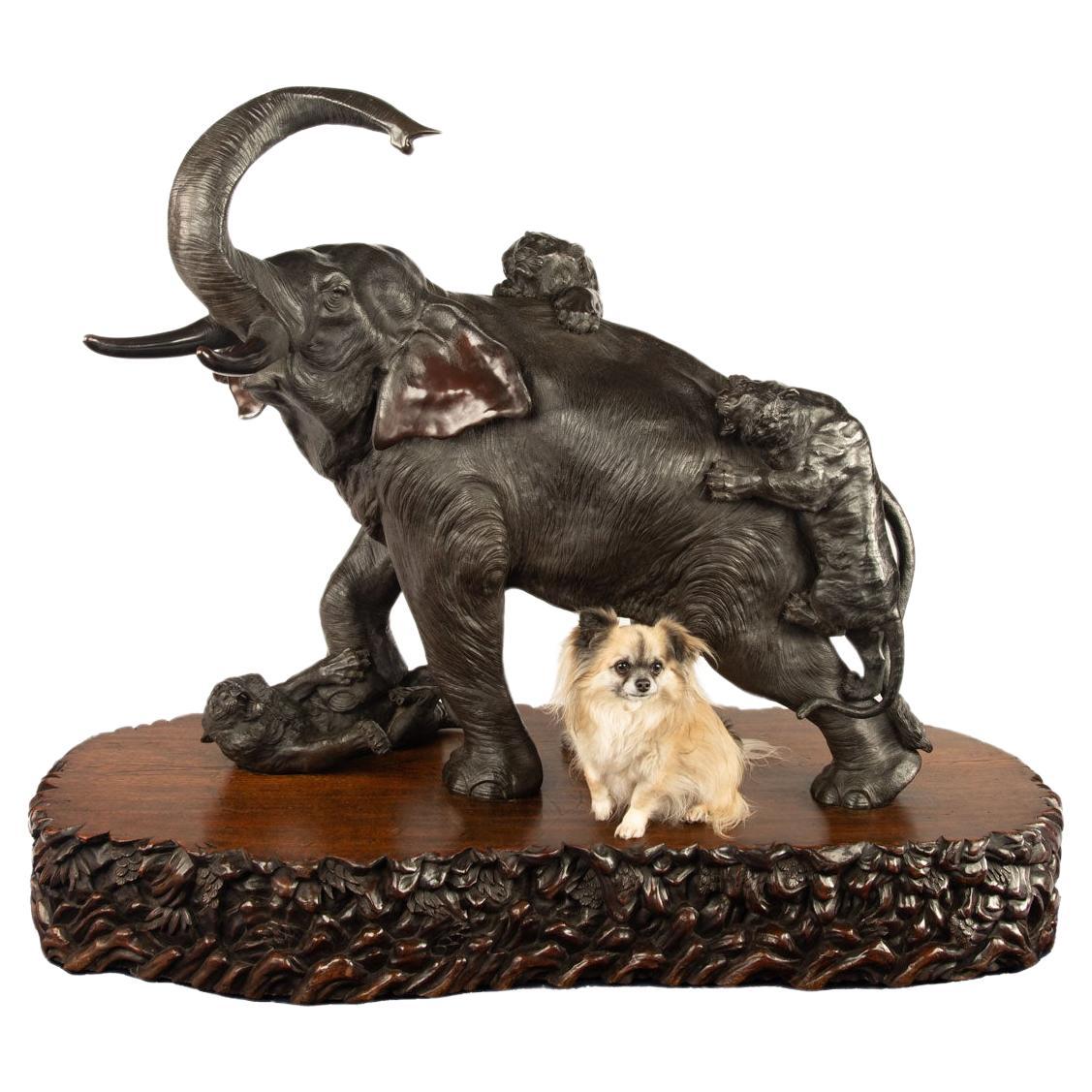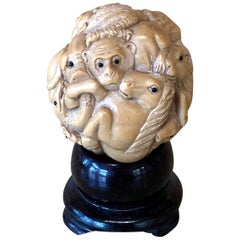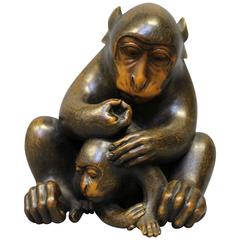
Antique Japanese Carved Wood Okimono of a Mother monkey and Baby Monkey
View Similar Items
1 of 8
Antique Japanese Carved Wood Okimono of a Mother monkey and Baby Monkey
About the Item
- Dimensions:Height: 4.73 in (12 cm)Width: 4.34 in (11 cm)Depth: 4.34 in (11 cm)
- Materials and Techniques:
- Place of Origin:
- Period:
- Date of Manufacture:circa 1880
- Condition:Signed to base.
- Seller Location:London, GB
- Reference Number:Seller: MK51stDibs: LU108163948153
You May Also Like
- Japanese Paloma Wood Carving Okimono of JurojinLocated in New York, NYA Japanese carved paloma wood Okimono of Jurojin (god of longevity with a turtle). A symbol of long life, the sculpture also depicts a young boy representing the beginning of life. Carved from one piece of boxwood with a beautiful rich patina. Jurojin originated from the Chinese Daoist god, the old man of the South Pole, he may have been a historical figure of the Northern Song Dynasty...Category
Antique Late 19th Century Japanese Meiji Sculptures and Carvings
MaterialsBoxwood
- Japanese Meiji Period Carved Wood Okimono Man with RabbitsLocated in Newark, EnglandThe charming figure, carved from a single piece of wood is exceptionally carved showing the male figure with humorous expression holding two Rabbits one by the ears and the second under his arm. A third Rabbit stands at the feet of the male looking up, each rabbit with a different expression. The male figure is wearing traditional Japanese attire with his hair tied back stood upon a naturalistic base. The figure dates to the Meiji Period (1868-1912) circa 1900. Notes The Rabbit is one of the 12 animals to feature in the Japanese Zodiac signs which follows the Chinese astrological system along with the Rat, Ox, Tiger, Rabbit, Dragon, Snake, Horse, Goat, Monkey, Rooster, Dog, Pig. Such division is connected with the Jupiter cycle around the Sun, which lasts about 12 years. As 2023 is the year of the Rabbit...Category
Antique Early 1900s Japanese Meiji Sculptures and Carvings
MaterialsWood
- Finely Carved Japanese Okimono on StandLocated in Atlanta, GAAn antique Okimono (Japanese means artsy display ornament object) displayed on a small custom wood stand from Meiji Period circa early 2oth century. T...Category
Early 20th Century Japanese Japonisme Sculptures and Carvings
MaterialsWood
- Japan 1890 Meiji Period Rare Carved Okimono Of A Father And Son Playing SignedLocated in Miami, FLJapanese Okimono sculpture of a father and son. Very rare and highly detailed sculpture, created during the meiji period (1868-1912) in the imperial Japan, circa 1890. This sculptural Okimono is very well realized and exceptionally proportionate. Show the figures of a father and a son playing, with happiness and smiling. The father hold a big basket at his back and both personages are wearing kimonos richly engraved. This piece was made from a carving with exceptional craftsmanship and intricate details. This sculpture stand itself on his own base and have all retain of the applied ochre ink accents. Measures: 130 mm by 45 mm by 53.3 mm (5.1 x 1.75 x 2.1 inches). Weight: 81.30 grams. Note: This kind of family scene is very rare to seen in nineteenth century japanese iconography. Okimono Is a Japanese term meaning for display an ornament; art object; or decorative object, usually displayed in a tokonoma or butsudan "Buddhist altar". It is an ornament or figure, especially one placed in a guest room. An okimono may be a small Japanese carving, similar to but larger than a netsuke. Unlike the netsuke, which had a specific purpose, the okimono is exclusively decorative and was displayed in the tokonoma. During the Meiji period, many okimonos were made for export to the West. Meiji Period This is an era of Japanese history that extended from October 23, 1868 to July 30, 1912.The Meiji era was the first half of the Empire of Japan, when the Japanese people moved from being an isolated feudal society at risk of colonization by Western powers to the new paradigm of a modern, industrialized nation state and emergent great power, influenced by Western scientific, technological, philosophical, political, legal, and aesthetic ideas. As a result of such wholesale adoption of radically different ideas, the changes to Japan were profound, and affected its social structure, internal politics, economy, military, and foreign relations...Category
Antique 1890s Japanese Meiji Sculptures and Carvings
MaterialsWood, Paint
$1,800 Sale Price20% Off - Antique Bronze Meiji Okimono Inkpot of a Crab, 19th Century, Japan, JapaneseLocated in Amsterdam, Noord HollandNicely made artifact of a Crab in the use of an Inkpot. Okimono (??, oki-mono) is a Japanese term meaning "ornament for display; objet d'art; decorative object", typically display...Category
Antique 19th Century Japanese Sculptures and Carvings
MaterialsBronze
$4,397 Sale Price20% Off - Antique Architectural Indian Carved Wood Temple Sculpture of Mother and ChildLocated in North Hollywood, CAAntique Architectural Hand Carved Wood Temple Sculpture of Mother and Child from India. Hand Carved Indian Temple Carving Statue from Gujarat Dep...Category
Antique Late 19th Century Indian Folk Art Sculptures and Carvings
MaterialsWood
Recently Viewed
View AllMore Ways To Browse
Antique Japanese Light
Chinese Coral
Coral China
Hand Carved Dragon
Antique Buddhist
Tall Stone Sculptures
Japanese Metal Antique
Asian Water Colour
Relief Carving Wood
Large Antique Asian Sculpture
Vintage Carved Asian Furniture
Antique Basin With Stone
Tall Iron Sculpture
Japan Space Age
Black Buddha
Container Ship
Japanese Large Garden Sculpture
American Mid Century China




